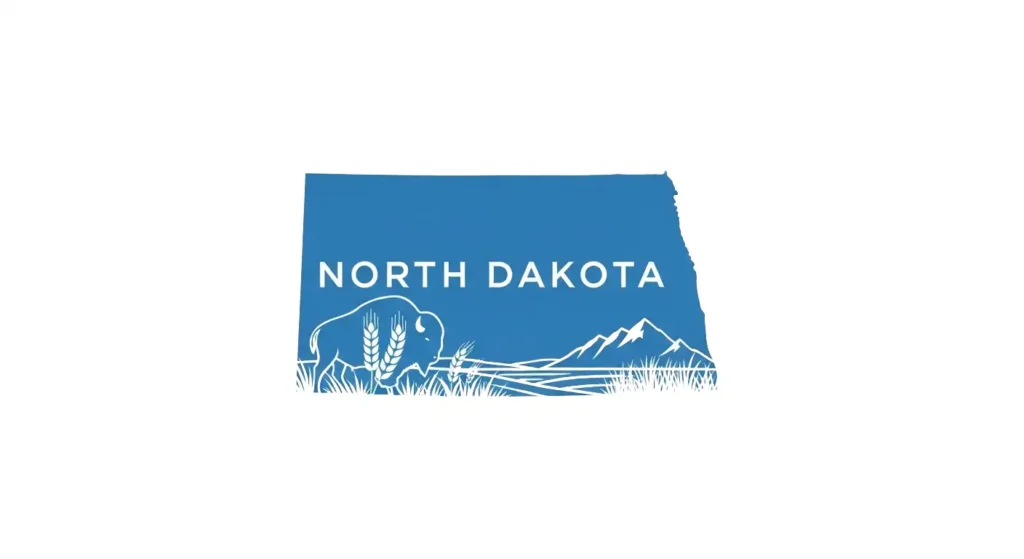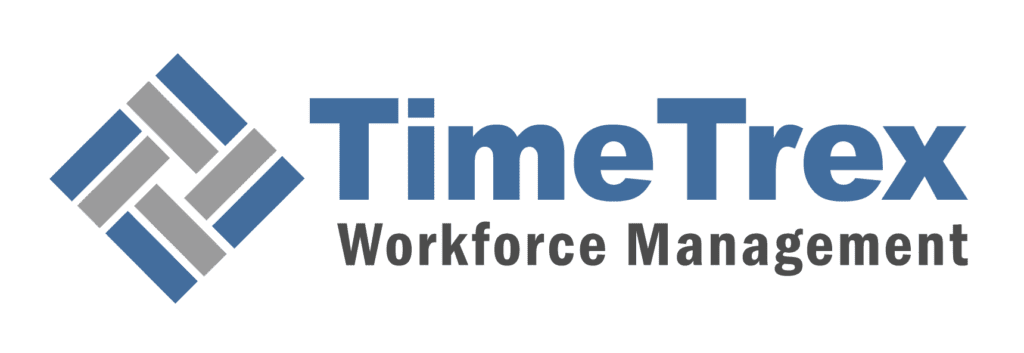Free North Dakota Payroll Tax Calculator

North Dakota Payroll Tax Calculator (Step-by-Step)
Understanding your paycheck is crucial, and our North Dakota Payroll Tax Calculator simplifies the process. Follow these easy steps to get an accurate estimate of your net pay:
Step 1: Enter Your Location and Filing Status
- Country: Ensure “United States” is selected. (This is pre-filled.)
- Province/State: Choose “North Dakota” from the dropdown menu. (This is pre-filled.)
- Federal Filing Status: Select your current federal filing status from your Form W-4 (e.g., Single, Married Filing Jointly, Head of Household). This determines your federal income tax withholding.
- Federal W-4 Version: Indicate whether you have a pre-2020 Form W-4 or a 2020 or later Form W-4. This is important as North Dakota’s withholding calculations differ based on the version of your W-4.
- For pre-2020 Form W-4: Enter the number of federal allowances you are claiming. This number affects the amount of federal and state income tax withheld from your paycheck.
- For 2020 or later Form W-4: Input the dollar amounts for any dependent credits, other income, or deductions as listed on your Form W-4.
- State Filing Status: North Dakota uses your federal filing status for state income tax withholding. Ensure this matches your federal filing status.
- State Withholding Allowances: North Dakota does not have a separate state withholding allowance form. The state uses the information you provide on your federal Form W-4 to determine state income tax withholding.
Step 2: Input Your Pay Information
- Gross Wage / Pay Period: Enter your total earnings before any deductions for the pay period. This is your gross pay.
- Pay Frequency: Select how often you receive your paycheck (e.g., Bi-Weekly (26), Weekly, Monthly) from the dropdown. This is essential for accurate annual calculations.
- Pay Date: Select the pay date using the calendar tool. This is for your reference and does not affect the tax calculations.
Step 3: Calculate Your Taxes
- Carefully review the calculated results.
- If you need to make changes, adjust the input fields and click “Calculate” again.
- To start a new calculation with different parameters, click the “New Calculation” button.
Important Notes:
- This calculator provides estimates based on the information you provide and the current North Dakota tax rates and regulations. North Dakota does not have local income taxes.
- Actual tax amounts may vary based on individual circumstances, additional deductions (e.g., pre-tax benefits, healthcare), and any changes in tax laws.
- It is crucial to keep your federal Form W-4 updated to ensure accurate tax withholding for both federal and state purposes. Any changes to your filing status, number of dependents, or other financial situations should be reflected on a new Form W-4 submitted to your employer.
Found our Free North Dakota Payroll Tax Calculator useful? Bookmark and share it.
TL:DR
North Dakota presents a highly competitive and stable payroll tax environment for 2025, distinguished by a low, simplified income tax structure and a remarkably robust State Unemployment Insurance (SUI) system. The state's framework is defined by a top marginal income tax rate of just 2.5%, a 2025 SUI taxable wage base of $45,100, and a notable absence of major ancillary payroll taxes, including local income, state disability, and paid family leave taxes. This minimalist approach provides businesses with a high degree of predictability in payroll costs, a key advantage over regional competitors. Looking forward, the state's tax policy will be shaped by the interplay between its significant reliance on volatile energy revenues and a clear legislative focus on providing tax relief, primarily through property tax credits rather than further substantial income tax reductions. For businesses, this signals continued near-term stability but underscores the need for long-term strategic planning that accounts for the state's commodity-driven economic cycles.
The North Dakota State Income Tax (SIT) Withholding Framework
North Dakota's state income tax system is a cornerstone of its business-friendly reputation. Its structure is defined by simplicity and low rates, yet its administration contains nuances that employers must navigate carefully. The framework is designed to be minimally burdensome while ensuring compliance, a balance that has significant strategic implications for businesses operating within the state.
2025 Income Tax Brackets and Rates: A Simplified Two-Bracket System
For 2025, North Dakota continues to utilize a simplified income tax structure that features only two effective tax brackets above a generous zero-tax threshold. This system applies a 0% rate on a substantial portion of initial income, followed by a marginal rate of 1.95% on the next tier of income, and a top marginal rate of only 2.5% on the highest earners. This structure firmly positions North Dakota as one of the lowest-taxed states in the nation for individual income.
The simplicity of this two-bracket system provides a stark contrast to the more complex, multi-bracket structures found in neighboring states like Minnesota, which has four brackets topping out at 9.85%. This straightforwardness is not accidental; it is a deliberate policy choice that simplifies tax liability forecasting for both employers and employees and serves as a core component of the state's economic development strategy to attract and retain businesses and high-income professionals.
2025 North Dakota Income Tax Withholding Rates & Brackets (Annualized)
| Filing Status | Taxable Income Bracket | Tax Calculation Formula |
|---|---|---|
| Single | $0 - $55,975 | $0 |
| Single | $55,975 - $252,325 | $0.00 + 1.95% of excess over $55,975 |
| Single | Over $252,325 | $3,828.83 + 2.50% of excess over $252,325 |
| Married Filing Jointly | $0 - $55,488 | $0 |
| Married Filing Jointly | $55,488 - $164,038 | $0.00 + 1.95% of excess over $55,488 |
| Married Filing Jointly | Over $164,038 | $2,116.73 + 2.50% of excess over $164,038 |
| Head of Household | $0 - $76,200 | $0 |
| Head of Household | $76,200 - $282,700 | $0.00 + 1.95% of excess over $76,200 |
| Head of Household | Over $282,700 | $4,026.75 + 2.50% of excess over $282,700 |
Withholding Calculation Methodologies: A Dual-System Approach
While the tax structure itself is simple, employers must contend with a dual system for calculating withholding, a direct consequence of the federal Form W-4 redesign in 2020. North Dakota accommodates both the old and new federal forms, requiring payroll departments to be proficient in two distinct methodologies. This creates a hidden layer of administrative complexity and a potential for error. Payroll software and systems must be configured to handle both allowance-based and dollar-based calculations, representing a tangible compliance cost for businesses.
The primary calculation procedure is the annualizing method, where an employee's wages for a specific pay period are projected over a full year to determine the annual tax liability, which is then divided by the number of pay periods to find the per-paycheck withholding amount. The specific steps depend on the version of the Form W-4 the employee has on file:
- For Pre-2020 Forms W-4: This method is based on withholding allowances. For 2025, the annual value of a single withholding allowance has been set at $5,050. This amount is multiplied by the number of allowances claimed on the employee's older W-4. The resulting total allowance amount is then subtracted from the employee's annualized gross wages to arrive at the taxable income, which is then applied to the state's tax tables.
- For 2020 and Later Forms W-4: This method aligns with the modern federal form, which eliminated allowances in favor of specific dollar amounts for dependents and other adjustments. The state's withholding worksheets are designed to use the data from the new federal form directly, streamlining the process for new hires and employees who have updated their forms.
Taxation of Supplemental Wages: A Favorable Flat Rate
North Dakota offers a highly favorable tax treatment for supplemental wages, such as bonuses, commissions, and overtime pay. When these payments are made separately from regular wages, employers are to withhold at a low, flat rate of 1.5%. This rate is substantially lower than the federal supplemental withholding rate of 22%, providing a significant cash-flow advantage to employees receiving such compensation.
If supplemental wages are combined with regular wages in a single payment, the aggregate method must be used. Under this method, the entire combined amount is treated as a single wage payment for the payroll period, and the standard withholding calculation is applied to the total.
Key Exemptions and Reciprocity Agreements: Strategic Tax Planning Opportunities
The state provides for several key exemptions and agreements that are critical for employer compliance and strategic workforce planning.
- Statutory Exemptions: Certain wages are exempt from North Dakota income tax withholding. This includes wages paid by farmers or ranchers to their employees and any wages that are specifically exempt from federal income tax withholding. A notable exception applies to nonresident aliens working in North Dakota; their wages are subject to state withholding even if a U.S. tax treaty exempts them from federal withholding, unless that treaty explicitly includes an exemption from state-level taxes.
- Reciprocity Agreements: North Dakota maintains crucial income tax reciprocity agreements with its neighbors, Minnesota and Montana. These agreements are essential tools for managing regional labor markets. Under these agreements, residents of Minnesota or Montana who perform services in North Dakota are exempt from North Dakota income tax withholding. Their employers should withhold taxes for their home state instead. This eliminates the significant administrative burden of dual-state withholding and filing for both employers and employees.
State Unemployment Insurance (SUI): A System in Focus
The State Unemployment Insurance (SUI) tax is the primary employer-paid payroll tax in North Dakota. The state's SUI system is characterized by a high degree of financial stability, a dynamic wage base, and a transparent, experience-based rating system. Understanding these components is essential for businesses to accurately forecast and manage their payroll costs.
2025 SUI Taxable Wage Base and Rate Structure
For 2025, several key parameters of the SUI system have been updated:
- Taxable Wage Base: The SUI taxable wage base for 2025 has increased to $45,100 per employee. This figure is recalculated annually and set at 70% of the statewide average annual wage, making it a dynamic figure that automatically adjusts with wage inflation.
- Rate Structure for Experienced Employers: For established businesses, 2025 SUI tax rates range from a minimum of 0.08% to a maximum of 9.68%.
- Rates for New Employers: New businesses are assigned a rate based on their industry. For 2025, the rate for new non-construction employers is 1.03%, while new construction employers face a significantly higher rate of 9.69%.
- Voluntary Contributions: Employers have the option to make a voluntary contribution to their SUI reserve account by April 30 of each year to potentially qualify for a lower tax rate.
2025 North Dakota SUI Tax Rates for New and Experienced Employers
| Parameter | 2025 Value |
|---|---|
| Taxable Wage Base | $45,100 |
| New Employer Rate (Non-Construction) | 1.03% |
| New Employer Rate (Construction) | 9.69% |
| Experienced Employer Rate Range | 0.08% - 9.68% |
The Experience Rating System Demystified
Job Service North Dakota determines each employer's annual SUI tax rate through a formulaic, experience-based system. The process involves calculating an employer's reserve balance (taxes paid minus benefits charged) and then their "reserve ratio" (reserve balance relative to average taxable payroll). This ratio is then used to assign a specific tax rate, rewarding employers with a history of stable employment with lower rates.
Analysis of the Unemployment Insurance Trust Fund: A Pillar of Stability
The health of North Dakota's UI Trust Fund is a critical factor providing a predictable cost advantage. The fund's robust solvency shields businesses from the volatile rate hikes and special assessments seen in other states. It began 2024 with a balance of $647.2 million and zero federal loans. This strong financial footing provides a high degree of certainty that SUI rates will remain stable, governed by the established experience rating formula rather than reactive legislative action.
Employer Compliance and Payroll Administration
Effective payroll management in North Dakota requires adherence to specific registration, filing, and remittance procedures mandated by state agencies. The state has increasingly moved toward a digital-first approach, making familiarity with its online portals essential for compliance.
Registration and Account Management: The Centrality of ND TAP
Before processing payroll, employers must complete a dual registration process with two separate state agencies:
- Office of State Tax Commissioner: Employers must obtain an Income Tax Withholding Account online through the North Dakota Taxpayer Access Point (ND TAP).
- Job Service North Dakota: Employers must also register for an Unemployment Insurance (UI) Account online via the Job Service North Dakota portal, often called UI EASY.
Filing and Remittance Obligations: E-Filing is the Standard
North Dakota's filing requirements have a strong emphasis on electronic submission.
- Income Tax Withholding (Form 306): Employers withholding $1,000 or more annually must file and pay quarterly. Those below this threshold may file annually. Quarterly filers are mandated to file and pay electronically via ND TAP.
- Unemployment Insurance (Form SFN 41263): SUI contributions and wage reports are due quarterly.
- Annual Reconciliation (W-2s and 1099s): By January 31, all employers must electronically submit copies of employee W-2s and relevant 1099s with Form 307.
North Dakota Payroll Tax Filing and Remittance Calendar
| Tax Type | Form Name/Number | Frequency | Due Dates |
|---|---|---|---|
| Income Tax Withholding | Form 306 | Quarterly (if >$1,000/yr) | April 30, July 31, October 31, January 31 |
| Unemployment Insurance | Form SFN 41263 | Quarterly | April 30, July 31, October 31, January 31 |
| Annual Wage Transmittal | Form 307, W-2s, 1099s | Annual | January 31 |
The Broader Payroll Landscape: A Minimalist Approach
A defining feature of North Dakota's payroll environment is the absence of several common taxes and mandatory programs found in other states. This "minimalist" approach is a significant, quantifiable competitive advantage, translating directly into lower costs and reduced administrative complexity.
- Absence of Local Payroll Taxes: North Dakota has no city, county, or other local-level payroll or income taxes, simplifying payroll processing significantly.
- Absence of State Disability Insurance (SDI): The state does not mandate a Short-Term Disability Insurance program funded by payroll taxes. Providing this benefit is a voluntary employer choice.
- Absence of Paid Family and Medical Leave (PFML): North Dakota has not enacted a mandatory, state-run PFML program, representing a clear financial advantage over states like Minnesota, which will implement a 0.7% PFML tax in 2026.
Overview of Ancillary Employer Requirements
While the direct tax landscape is simple, employers must still comply with other payroll-related mandates:
- Workers' Compensation: Coverage is mandatory and must be purchased exclusively from the state-administered fund, North Dakota Workforce Safety & Insurance.
- Minimum Wage: North Dakota's state minimum wage is tied to the federal rate of $7.25 per hour. The minimum wage for tipped employees is $4.86 per hour.
The Road Ahead: Economic and Legislative Outlook Beyond 2025
North Dakota's future payroll tax environment will be dictated by the balance between its powerful, yet volatile, energy-driven economy and evolving legislative priorities.
North Dakota's Economic Engine: Forecasts and Key Drivers
The state's fiscal health is inextricably linked to the global energy market, with the oil and gas industry being a dominant contributor to its GDP. This reliance makes state revenues highly sensitive to commodity prices. The March 2025 revenue forecast was revised downward due to lower projected oil tax revenues, highlighting this volatility. The forecast is built on conservative oil price assumptions, but the growing number of tax-exempt "stripper wells" poses a long-term fiscal challenge.
The Legislative Agenda: The Future of North Dakota Tax Policy
Recent legislative sessions reveal a clear policy shift: tax relief is being directed toward property taxes rather than further income tax cuts. In 2025, lawmakers expanded a primary residence property tax credit while defeating a proposal to expand the zero-income-tax bracket. This is a crucial signal that the appetite for major cuts to payroll-related income taxes has cooled. For the near future, businesses should expect the current income tax structure to remain stable.
Strategic Implications and Recommendations for Employers
For 2025-2027, employers can budget for a highly stable payroll tax environment. The primary long-term risk remains the state's reliance on oil revenue. Businesses should leverage the current stability for planning and investment while incorporating the state's official revenue forecasts into their long-range risk assessments. These forecasts serve as the most reliable leading indicators of the state's fiscal health and potential future shifts in tax policy.
Regional Tax Competitiveness Analysis
North Dakota's payroll tax policies are best understood in the context of its regional competitors. A comparative analysis reveals that the state occupies a highly strategic position, offering a compelling alternative to both high-tax and no-tax neighbors.
Comparative Analysis: North Dakota vs. Minnesota, Montana, and South Dakota
North Dakota’s tax structure is significantly more favorable than high-tax Minnesota but less aggressive than no-tax South Dakota. The state’s primary challenge is competing against South Dakota's zero-income-tax model. However, its low and simple tax system, combined with high-quality public services funded by energy wealth, creates a unique competitive advantage, especially against Minnesota with its 9.85% top tax rate and impending PFML tax.
2025 Regional Payroll Tax Competitiveness Scorecard
| Tax Metric | North Dakota | South Dakota | Minnesota | Montana |
|---|---|---|---|---|
| Top SIT Rate | 2.5% | 0% | 9.85% | 5.9% |
| SIT Brackets | 2 (plus 0% tier) | None | 4 | 2 |
| SUI Wage Base | $45,100 | $15,000 | $43,000 | $45,100 |
| SUI Rate Range | 0.08% - 9.68% | 0% - 9.5% | 0.4% - 8.9% (+5% assessment) | 0.00% - 6.12% |
| Local Income Tax | No | No | No | No |
| State Disability Tax | No | No | No | No |
| State PFML Tax | No | No | Yes (0.7% in 2026) | No |
Conclusion
North Dakota's payroll tax framework in 2025 is a model of stability, simplicity, and regional competitiveness. Anchored by a low two-bracket income tax system and a fully solvent SUI fund, the state offers businesses a predictable and low-cost environment. The absence of local, disability, and paid family leave taxes further enhances this advantage.
The state's future trajectory will be a disciplined balancing act. The legislature's pivot toward property tax relief over further income tax cuts suggests the current payroll tax structure will remain largely intact. For companies operating in or considering North Dakota, the strategic implication is clear: the state offers a prime location for those seeking predictable and low payroll-related costs. The key to long-term success will be to leverage this stability while actively monitoring the state's economic forecasts and legislative priorities as indicators of any future policy shifts.
Simplify Your North Dakota Payroll
Navigating payroll taxes can be complex. TimeTrex offers a comprehensive payroll solution to keep you compliant and focused on growing your business.
Learn More About TimeTrex Payroll ServicesOther Payroll Tax Calculators
Loading other available calculators...
Disclaimer: The content provided on this webpage is for informational purposes only and is not intended to be a substitute for professional advice. While we strive to ensure the accuracy and timeliness of the information presented here, the details may change over time or vary in different jurisdictions. Therefore, we do not guarantee the completeness, reliability, or absolute accuracy of this information. The information on this page should not be used as a basis for making legal, financial, or any other key decisions. We strongly advise consulting with a qualified professional or expert in the relevant field for specific advice, guidance, or services. By using this webpage, you acknowledge that the information is offered “as is” and that we are not liable for any errors, omissions, or inaccuracies in the content, nor for any actions taken based on the information provided. We shall not be held liable for any direct, indirect, incidental, consequential, or punitive damages arising out of your access to, use of, or reliance on any content on this page.
Trusted By
Trusted by 3.2M+ Employees: 21 Years of Service Across Startups to Fortune 500 Enterprises
Join our ever-growing community of satisfied customers today and experience the unparalleled benefits of TimeTrex.










Strength In Numbers
Join The Companies Already Benefiting From TimeTrex
Time To Clock-In
Start your 30-day free trial!
Experience the Ultimate Workforce Solution and Revolutionize Your Business Today
- Eliminate Errors
- Simple & Easy To Use
- Real-time Reporting

Saving businesses time and money through better workforce management since 2003.
Copyright © 2025 TimeTrex. All Rights Reserved.
